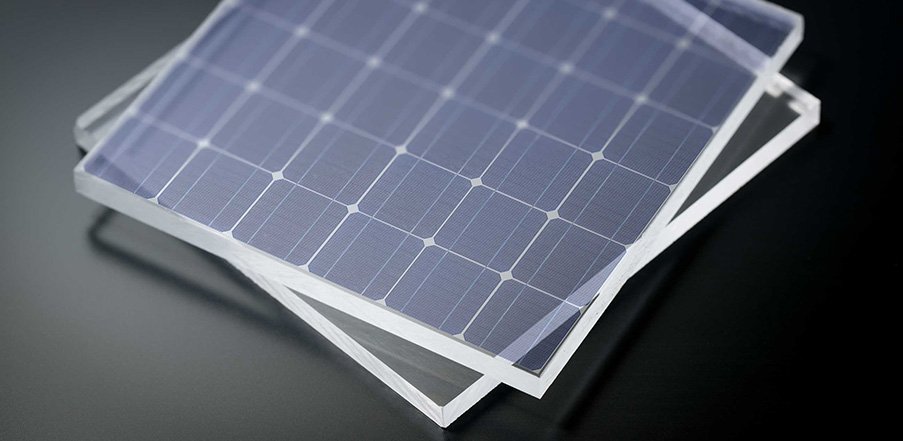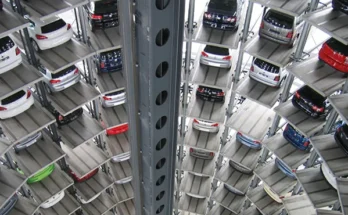Korean scientists have unveiled a groundbreaking innovation—transparent solar panels—that promise to turn windows into power-generating surfaces without compromising visibility. In densely populated urban areas where space is limited, this technology offers a remarkable solution to the spatial constraints of traditional solar panels. By seamlessly integrating renewable energy generation into modern cityscapes, transparent solar panels represent a major step toward a sustainable and energy-efficient future.

These “invisible” solar panels are designed to absorb non-visible wavelengths of light—such as ultraviolet (UV) and near-infrared—while allowing visible light to pass through. This allows for solar power generation without obstructing views or affecting the transparency of glass surfaces. Imagine a future where every window in a skyscraper, every glass wall, and even vehicle windows could harness solar energy without altering the appearance of the structures. This could revolutionize how we think about urban energy production and contribute to a cleaner, greener world.
The Journey to Transparent Solar Technology

The concept of transparent solar panels has been in development for years, and a pivotal breakthrough occurred in 2014. Researchers at Michigan State University developed the first fully transparent solar concentrator. This innovation uses organic molecules to absorb invisible light while allowing visible light to pass through. The absorbed energy is directed to the edges of the panel, where thin strips of photovoltaic cells convert it into usable electricity. This method ensures that the panels maintain their clarity while generating power, making them ideal for use in windows, facades, and other glass surfaces.
Since then, transparent solar technology has progressed significantly. Initially, these panels achieved an energy conversion efficiency of just 1%. However, continuous research and advancements have dramatically improved this figure. The current efficiency is approaching 10%, a noteworthy leap that brings this technology closer to becoming a viable alternative to traditional solar panels.
Applications of Transparent Solar Panels
The potential applications of transparent solar panels are vast and transformative. In architecture, these panels can be seamlessly integrated into building designs, replacing traditional windows, skylights, or glass facades. This would allow buildings to become self-sustaining energy sources without compromising aesthetics or functionality. Urban infrastructure, including bus stops, train stations, and other public spaces, can also adopt these panels, contributing to a city’s energy needs without altering its design or appearance.
Transparent solar panels could revolutionize consumer electronics, offering built-in solar power to devices like smartphones, wearables, and laptops. By embedding transparent solar cells into screens or surfaces, these devices could charge without the need for a plug, significantly reducing reliance on external charging. This technology could also be extended to the transportation sector, with potential applications in vehicles, airplanes, and even outdoor signs, allowing mobility solutions to generate their own energy.
Overcoming Efficiency Challenges
Despite their exciting potential, transparent solar panels have faced challenges, particularly in terms of efficiency. Traditional solar panels, made from opaque materials, typically achieve higher energy conversion rates. However, transparent solar cells have historically lagged behind due to the difficulty in capturing light efficiently while maintaining transparency.
Recent advancements in materials science have helped address this issue. The introduction of perovskite and quantum dot materials has significantly improved light absorption and energy conversion rates. Perovskites, a class of materials known for their excellent light absorption capabilities, and quantum dots, which are nanoscale particles that can be tailored to absorb specific wavelengths of light, have made transparent solar panels more competitive with traditional solar technologies. These materials not only enhance efficiency but also help reduce production costs, making transparent solar panels increasingly viable for large-scale applications.
Researchers like Richard Lunt from Michigan State University have been at the forefront of these developments, focusing on improving both the efficiency and scalability of transparent solar panels. Their work aims to make these panels more practical for use in a variety of industries, from residential buildings to commercial spaces and public infrastructure.
The Future of Transparent Solar Panels
The future of transparent solar panels looks promising, with ongoing research and development expected to continue driving innovation. As materials improve and manufacturing processes become more efficient, the cost of transparent solar technology is expected to decrease, making it more accessible to a wider audience. This would allow the integration of solar energy into everyday objects and structures without the need for additional space or significant aesthetic changes.
In urban environments, transparent solar panels offer a unique solution to the challenge of limited space for traditional solar panels. By turning existing glass surfaces—such as windows and facades—into energy generators, cities could significantly reduce their dependence on non-renewable energy sources. This could also contribute to reducing the urban heat island effect, as solar panels could absorb and convert sunlight into electricity rather than allowing it to contribute to heat buildup in the city.
Moreover, transparent solar panels align with global efforts to combat climate change and reduce carbon footprints. By integrating solar power into everyday structures and objects, we can increase the overall adoption of renewable energy and reduce the environmental impact of energy production. This shift toward energy-efficient solutions is not just a technological advancement but also a cultural transformation toward sustainability and energy independence.
A Cleaner, Greener Future
As transparent solar panels continue to evolve, their potential to reshape the energy landscape becomes clearer. The integration of solar energy into everyday surfaces—without compromising the appearance or function of those surfaces—could revolutionize how we produce and consume energy. Whether it’s in a skyscraper window, a smartphone screen, or a bus stop, the ability to generate clean energy from existing surfaces will make a significant contribution to a greener future.
With ongoing advancements in materials science, transparent solar panels are set to play a crucial role in the future of renewable energy. As their efficiency increases and production costs decrease, these panels will become a key component of sustainable urban energy systems, helping cities become more energy-efficient and self-sustaining. The era of transparent solar panels is here, and it holds the potential to transform the way we think about energy generation—turning ordinary glass surfaces into powerful sources of renewable energy, invisible yet vital to the world’s future.



